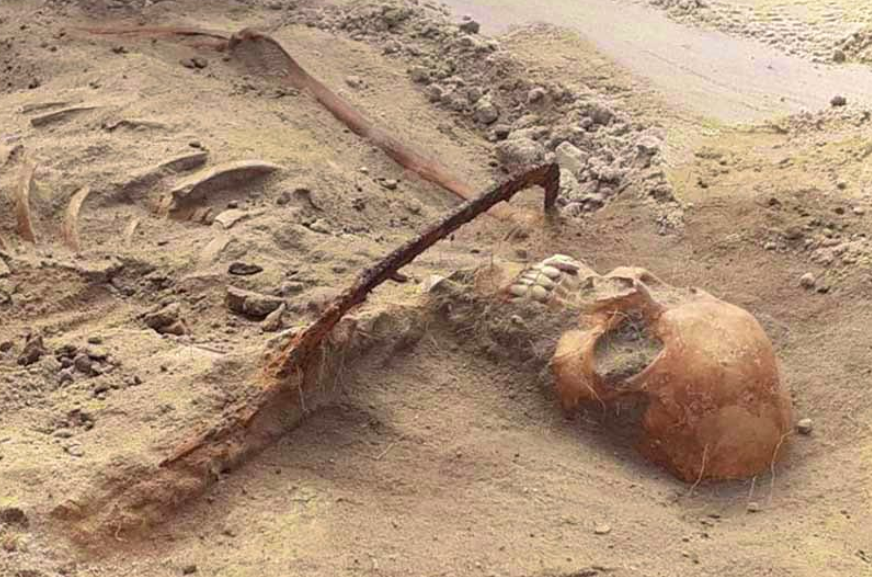
Archaeologists stumble upon ‘female vampire’ in 17th century Poland grave

Archaeologists have excavated the remains of what they are call a “female vampire” from a 17th century graveyard in Poland’s Pien.
The skeleton had an iron sickle stuck to the woman’s neck, which is being suspected to be a part of ritual of those times to prevent the dead from rising.
The remains of the woman show a protruded tooth at the front of her mouth and archaeologists believe this could have been a reason why she must have been put to death on charges of being a vampire in line with custom and beliefs in the 17th century, reports said.
According to Insider, the dig led by Professor Dariusz Polinksi and his team from Nicolaus Copernicus University identified the sickle stuck to the neck of the woman as a commonly used farming tool in the 17th century, which was also employed by superstitious Poles to restrain alleged vampires.
The team told Insider that the woman had a padlock wrapped around her toe, signifying the burial practice of the times to prevent the dead from resurrecting.
The woman was also wearing a skull cap, indicating that she had high social standing.
Vampires find mention in European folklores and are believed to be undead creatures which exist by feeding on the blood of the living. Interest in the creature grew popular through European literature, especially via works like John Polidori’s The Vampyre and Bram Stoker’s Dracula, which in turn acted precursors to an extensive genre of vampire literature and inspired sub-culture works.
In an almost similar discovery, but more gruesome in nature, archaeologists in Bulgaria had stumbled upon the body of an alleged vampire which had a metal pole hammered through its chest and one of the legs removed, during an excavation in 2014.

